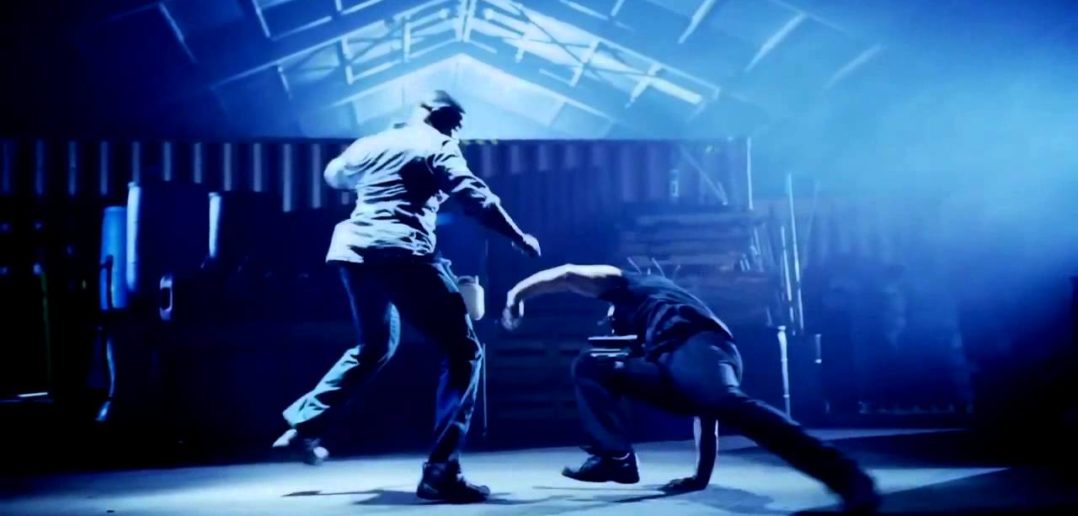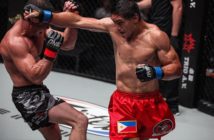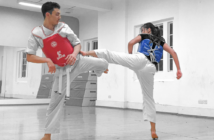Martial arts training includes different types of workouts, and some of them are easy to do at home. The things that you can focus on depend on what martial arts you are interested in. Most common topics are: strength, agility, speed, endurance, mobility and technique. But there are also other aspects. What you can do to get better in each of them? Here are some tips.
Strength is important in all martial arts, but especially in grappling sports. The best way to get stronger at your home is through calisthenic workout, like push ups, pull ups and squats. If you are looking for pure strength progression, you can apply 3 x 5 sets1, and increase difficulty of those exercises by trying a harder version, or you can add weight by using weighted vest or other accessories if you want to progress further.
Agility is essential for martial arts that use a lot of moving around your opponent, like for example capoeira. To increase your agility, best exercises would be those that base on your explosive strength. If you include in your workout burpees, box jumps or simple high jumps in tabata program2 (Work out hard for 20 seconds, then rest for 10 seconds and repeat until you complete 8 rounds). For better effect is good to change between these exercises every training session.
In martial arts we can distinguish four types of speed. Perception speed, reaction speed, recovery speed, and execution speed. Most common is execution speed. This is the type of speed that impacts how fast can we move when we make a punch, throw or kick3. The best way to move faster is through repeating moves that you learned from your instructor slowly in the front of mirror. Try to pay attention to the smallest details of your move, and try to repeat it flawlessly as fast and as much times as you can.
Main point in endurance trainings is to make your muscles more resistant to fatigue. There are different types of endurance, but as a martial artist is best to focus on basic and max endurance. Basic endurance will help your overall performance, while max endurance is important in long sparring sessions or matches.
To increase your basic endurance you should make low intensity exercises. Training at this intensity trains your cardiac output and heart muscle. As most of the energy produced at this intensity comes from your body fat, it also improves the economy of your metabolism. Workout like this should be at least 30 min long, and with constant pace with no pauses.
To increase your max endurance however, exercises should be in high intensity. An interval should be 3-5 min long with rests 3-6 minutes, and workout should not be longer that 20 minutes.4
Depending on the martial art you want to master, mobility and stretching can help you get better. You should do these after workout, when your muscles are warmed up.
For grapplers and wrestlers most important are joints in arms. Increasing their mobility lets you not only move wider, but also to withstand longer in locks.
Punching sports amateurs depend a lot on upper body and hips mobility. Wider move of upper body allows better evasive movements. Hips mobility is vital for generating strength in a punch from the hip rotation.
Kickers on the other hand should focus on their lower bodies, especially on their legs. Being able to kick high is one of the basics for most hard blows, and better movement of joints makes it easier to learn and use more often some surprising kicks, like hook kick. Try different stretching exercises like piriformis, 90/90, frog, butterfly and lying quad stretches.
Remember to always stretch at least to 15 minutes after workout, and after the session give your muscles one day to regenerate before next stretching. Also, examples above are important to focus on, but don’t neglect the rest of the body. More flexibility also improves your agility.
Training technique on your own depends mostly on your knowledge of the martial art that you are mastering. Different combat system use different moves. Some of them are impossible to do without a training partner or a dummy, like throws for example. The best way to make as much progress as you can is to do one of two things.
First is to use moves, that you are sure that you know how to correctly execute. This way you can avoid learning a move in a wrong way, which is not irreversible, but can sometimes be problematic in a fight or a sparring. Any complex move that you perform wrongly can lead to a risk of injury or weaker hit. Perfecting an attack depends on your body fitness, muscle and movement awareness and theoretical knowledge. If you are sure that you can learn it right way without injuring yourself, then do it. The more experienced you are, more different moves you can repeat on your own.
Second way is to gain the knowledge from top instructors and experienced people online where you lack anything in your technique. At the click of a button now you can gain access to some of the best martial art training online on sites like CoachTube.

Don’t be afraid to ask for help or explanation if you are not sure about something. Everybody started somewhere, and they also have been there. If you have a lot of training years on your account and you would like to develop yourself further, try taking notes from workshops and seminars.
Information gathered here are a good basis for your self-development. Find your weakest point, and work on them outside of the mat. This way you will be better when you’ll come back on it. In some martial arts there are philosophical wisdoms. Most them are centred around working hard on advancement not only in form of a new belt, but also as a person. And to do it, you need to work for it.
Sources
1– Starting Strength by Mark Rippetoe
2– Tabata, Izumi; Nishimura, K.; Kouzaki, M.; Hirai, Y.; Ogita, F.; Miyachi, M.; Yamamoto, K. (1996). “Effects of moderate-intensity endurance and high-intensity intermittent training on anaerobic capacity and VO(2max)”. Medicine and Science in Sports and Exercise. 28 (10): 1327–1330. Retrieved 29 June 2015.
https://www.researchgate.net/publication/14310387_Effects_of_moderate-intensity_endurance_and_high-intensity_intermittent_training_on_anaerobic_capacity_and_VO2max
3-Ultimate Fitness Through Martial Arts by Sang H. Kim
4– Types of Endurance Training Explained – Jarek Mäestu (PhD)
5– Becoming a Supple Leopard 2nd Edition: The Ultimate Guide to Resolving Pain, Preventing Injury, and Optimizing Athletic Performance by Kelly Starrett






